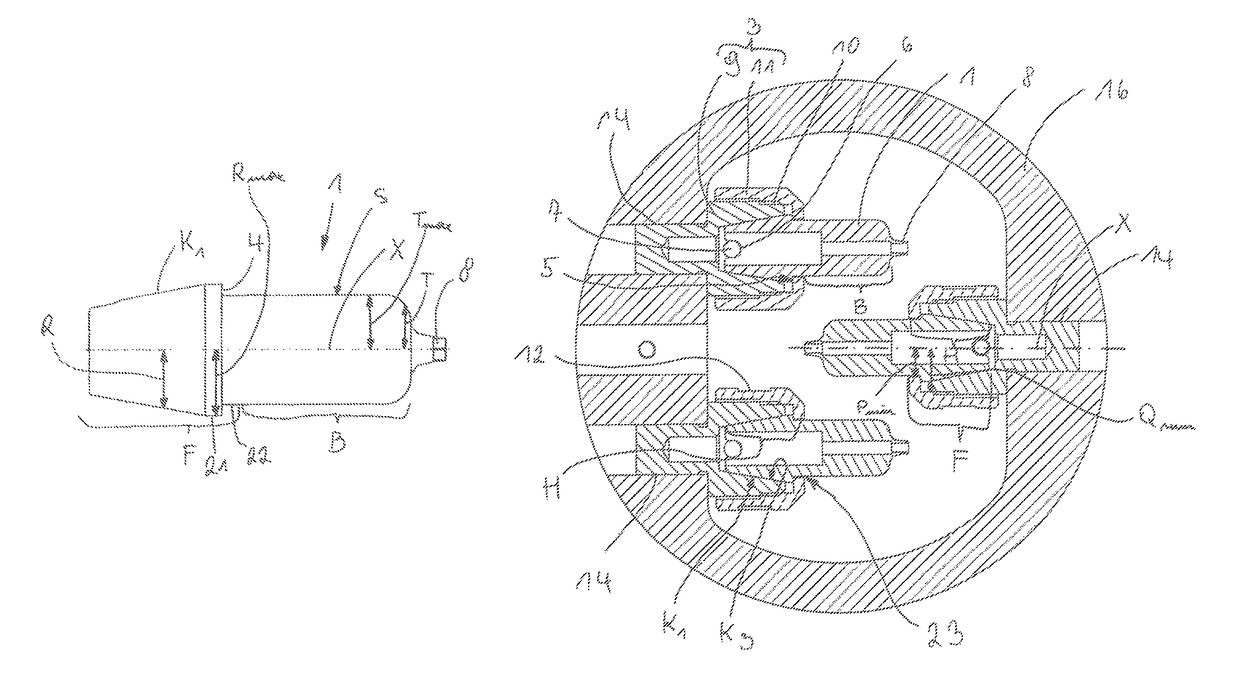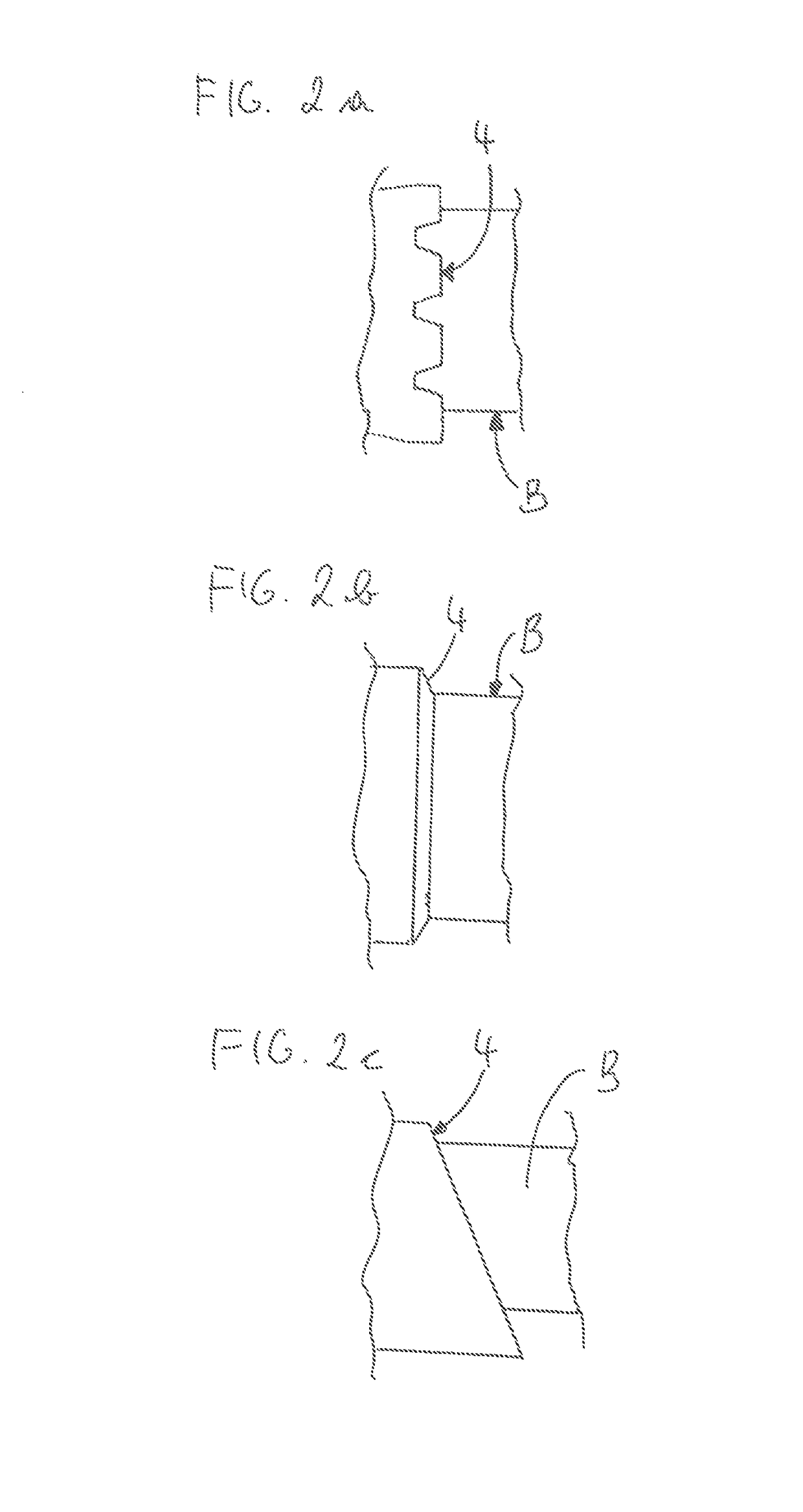Axially elongate dental machining portion
a technology of machining portion and machining portion, which is applied in the direction of tool workpiece connection, manufacturing tools, dental surgery, etc., can solve the problems of inaccuracy of laboratory implant machining, inability to accurately machining and the adhesive joint between the blank and the holder can loosen under a heavy load, so as to simplify the fixation or holding of the machining portion to the holder
- Summary
- Abstract
- Description
- Claims
- Application Information
AI Technical Summary
Benefits of technology
Problems solved by technology
Method used
Image
Examples
first embodiment
[0054]FIG. 11 shows an alternative embodiment of a holder 3, wherein, in particular, the base element 9 is of an alternative configuration in the region remote from the machining portion 1. In principle, the base element 9 itself again has a male thread as part of the cap nut 11 and the conical region K3. It is also possible to see the fitting pin 7. The cap nut 11 and the machining portion 1 are practically identical to the As a substantial difference, the limit switch 20 can also be fixed to the base element 9, as can be seen, in particular, from FIG. 12. That limit switch 20 corresponds to an abutment disposed on the machine. Conversely, the abutment instead of the limit switch 20 can also be arranged on the base element 9. The section A-A shown in FIG. 12a is also clearly illustrated in FIG. 12b, wherein, besides the fixing projection 9 and the holding nose 5, it is also possible to see in this sectional view the fitting pin 7 which engages into the positioning groove 6. The li...
second embodiment
[0058]FIGS. 23 and 24 show a machining portion 1. With this or also another kind of external geometry, it is possible to carry out a scan prior to the machining operation (that is to say, prior to the cutting process) with that machining portion 1. Hitherto, separate scan markers have been used to determine the position and inclination of the implants disposed in the jaw of the patient. A machining portion 1 involving the external geometry as shown in FIGS. 23 and 24 can be used in non-machined form, as such a scan marker. Then, in a second step, the desired part is milled in the machining device 2.
[0059]FIG. 25 shows a dental machining portion 1 in the form of a dental construction which is as yet unmachined. In that respect, in substance, the same advantages and variants apply in terms of fixing and manufacture, as for the abutment. In particular, the fixing region F is of the same dimensions. The machining region B can possibly be of a larger diameter than in the case of the abut...
PUM
| Property | Measurement | Unit |
|---|---|---|
| Fraction | aaaaa | aaaaa |
| Fraction | aaaaa | aaaaa |
| Fraction | aaaaa | aaaaa |
Abstract
Description
Claims
Application Information
 Login to View More
Login to View More - R&D
- Intellectual Property
- Life Sciences
- Materials
- Tech Scout
- Unparalleled Data Quality
- Higher Quality Content
- 60% Fewer Hallucinations
Browse by: Latest US Patents, China's latest patents, Technical Efficacy Thesaurus, Application Domain, Technology Topic, Popular Technical Reports.
© 2025 PatSnap. All rights reserved.Legal|Privacy policy|Modern Slavery Act Transparency Statement|Sitemap|About US| Contact US: help@patsnap.com



